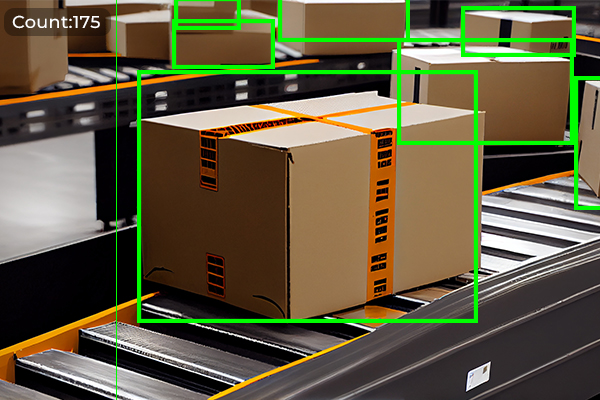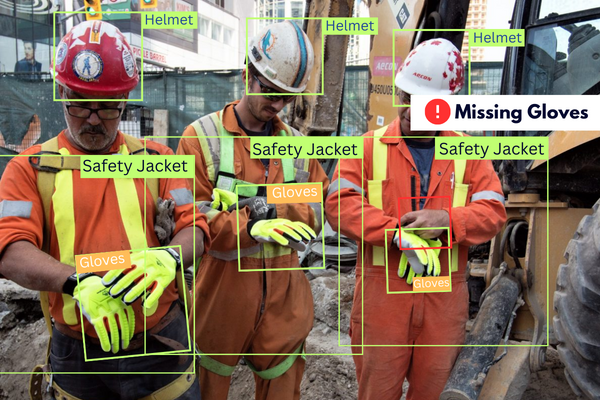Computer vision, powered by artificial intelligence and machine learning (AI/ML), has emerged as a game-changer in the manufacturing industry. By harnessing the capabilities of AI to capture, analyze, and understand visual inputs from the physical world, computer vision is reshaping the factory floor. This article introduces the components of computer vision in manufacturing, explores key use cases, discusses challenges, and summarizes the place of this emerging technology in manufacturing.
Components of Computer Vision in Manufacturing
Computer vision systems in manufacturing consist of several key components:
- Image Capture Devices: Cameras, sensors, and other devices collect visual data from the production environment. These include traditional 2-D photo cameras, 3-D cameras, area scanning cameras, and even infrared cameras.
- Preprocessing: Raw images undergo cleaning and enhancement processes to optimize them for analysis.
- Feature Extraction: Relevant features, such as edges, shapes, and textures, are identified to provide meaningful data for further processing.
- Machine Learning Models: Trained models enable classification, detection, and segmentation of objects within the visual data.
- Decision-Making Algorithms: These algorithms interpret visual data and make informed decisions to guide manufacturing processes.

Use Cases in Manufacturing
1. Quality Inspection:
- Computer vision identifies flaws on product surfaces, ensuring high-quality production.
- Precise measurements help maintain consistent product dimensions.
- Front-line workers spend less time on non-value-add inspections, enhancing overall efficiency.
2. Factory Synchronization and Dynamic Scheduling:
- Cameras monitor material and product movement, providing real-time data for decision-making.
- Optimization of resource allocation based on real-time data prevents bottlenecks and ensures timely material flow.
- Proactive measures are taken to enhance efficiency throughout the manufacturing process.
3. Human-to-Machine Collaboration:
- Machines interpret human gestures, facilitating intuitive control in manufacturing processes.
- Operators receive real-time visual feedback on their actions, improving communication and performance.
4. Human Activity Analysis:
- Computer vision detects unsafe behaviors, triggering alerts to prevent accidents.
- Worker posture and ergonomics are evaluated to prevent injuries and enhance workplace safety.
- While computer vision offers substantial benefits, there are challenges to address and issues to consider.
5. Computer Vision-Assisted Die Cutting
- The most common methods of die-cutting in the manufacturing process are Rotary and Laser Die Cutting. These are enhanced to pinpoint accuracy through computer vision.
- The computer vision system receives the design pattern and directs the die cutting machine, whether it is laser or rotary, to cut precisely.

Computer vision technology is increasingly being utilized in the workplace to enhance safety and efficiency. Sophisticated algorithms enable real-time monitoring of worker behavior, ensuring compliance with safety protocols and identifying potential hazards. For instance, computer vision can detect if workers are not wearing the required personal protective equipment or if they are engaging in unsafe practices. This proactive approach to safety can significantly reduce the risk of accidents and injuries, leading to a safer work environment.
Computer vision systems can also be employed to monitor worker fatigue and substance impairment, particularly in roles that involve operating heavy machinery. By analyzing video feeds, these systems can alert supervisors to signs of worker impairment which could prevent serious accidents.
Computer vision is transforming the work of package and inventory monitoring, offering a level of precision and efficiency that manual processes cannot match. By utilizing cameras and machine learning algorithms, computer vision systems can continuously track packages throughout a facility, ensuring they are correctly sorted and stored. This technology also excels in inventory management, where it can quickly identify and count stock levels, detect misplaced items, and even predict shortages before they occur. The real-time data provided by computer vision allows businesses to make informed decisions, reduce errors, and optimize their supply chain operations.
The traditional methods of inventory tracking involve manual counts and barcode scanning, which are time-consuming and prone to human error. Computer vision offers a transformative solution by automating these processes. Advanced algorithms enable the system to detect and recognize products on shelves, in storage, or on conveyor belts, counting them in real-time with high accuracy. This more accurate data makes it easier to generate accurate reports that show you the true state of your business.
In the context of logistics, computer vision aids in the extraction of data from package labels and the detection of parcel damages upon receipt. This not only streamlines the sorting process but also enhances the accuracy of inventory audits. As computer vision technology continues to advance, its role in package and inventory monitoring is set to become even more integral, driving innovation and productivity in the industry.
Issues and Challenges
1. Data Quality: Reliable data collection is crucial to ensure accurate results and effective decision-making.
2. Privacy and Ethics: Striking a balance between surveillance for operational purposes and respecting privacy rights is essential.
3. Adaptability: Customizing computer vision models for specific manufacturing environments is necessary for optimal performance.
Examples of Success: Drishti Technologies, a leading vendor in computer vision solutions for manufacturing, exemplifies success. Their technology captures and analyzes assembly line activities, providing valuable insights for process improvement.
Conclusion: In summary, computer vision is revolutionizing manufacturing by enhancing production flexibility, scalability, and quality while minimizing resource usage. As smart factories continue to evolve, manufacturers can leverage this powerful tool to stay competitive and drive innovation in the ever-evolving landscape of the manufacturing industry.
Conclusion
Combining computer vision with advanced logistics, device, and asset tracking, and IOT will revolutionize the entire supply chain, from sourcing to delivery. Computer vision can enable smart inventory management, reducing waste and optimizing storage space. It can also facilitate seamless tracking of products and materials across different locations, ensuring traceability and accountability. Furthermore, computer vision can enhance customer satisfaction by enabling faster and safer delivery of products, as well as providing personalized recommendations and feedback.
As computer vision becomes more accessible and affordable, it will create new opportunities and challenges for manufacturers. They will need to invest in the right infrastructure, talent, and training to harness the full potential of this technology. They will also need to collaborate with other stakeholders, such as suppliers, customers, regulators, and competitors, to create a shared vision and standards for computer vision in manufacturing. By doing so, they will be able to reap the benefits of this technology while mitigating the risks and ethical dilemmas.
Computer vision is not a futuristic concept, but a present reality that is transforming manufacturing in unprecedented ways. By embracing this technology, manufacturers can achieve higher levels of productivity, quality, safety, and innovation, and create a competitive edge in the global market.
WRITTEN BY
Deimante Boguzaite
2024-03-12










































































































































































